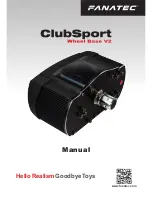
Table 7.1 Troubleshooting
Symptom
Probable Cause(s)
Solution(s)
1. Keypad doesn’t function
-Bad connection between PCB and keypads
-Clean contact area on PCB
-Replace keypads
2. LEDs will not light
-No power to instrument
-Power supply defective
-Check power line connections
-Replace power supply board
3. Some segments of the display or
LED lamps not lit or lit erroneously
-LED display or LED lamp defective
-Related LED driver defective
-Replace LED display or LED lamp
-Replace the related transistor or IC chip
4. Process display shows: SBER
-Sensor break error
-Replace RTD or sensor
-Use manual mode operation
5. Process display shows: LLER
-Input signal beyond the low range, sensor fails
-Incorrect input type selected
-Replace sensor
-Check sensor or thermocouple type, correct
input selection
6.Process display shows: HLER
-Input signal beyond the high range, sensor fails
-Incorrect input type selected
-Replace sensor
-Check sensor or thermocouple type, correct
input selection
7. Process display shows: ADER
-A to D module damage
-Replace module. Check for outside source of
damage such as transient voltage spikes.
8. Process display shows: OPER
-Incorrect operation of autotune
-Set point for autotune too low
-Manual mode does not allow on-off control
-Set P band greater than 0, repeat procedure
-Increase set point
-Increase proportional band
9. Process display shows: CSER
-Check sum error, values in memory may have
changed accidentally
-Check and reconfigure the control
parameters
10. Process display shows: NTER
-Data failed to be entered into EEPROM
-Replace EEPROM
11. Process display shows: OVER
-Overflow error, data out of range during
execution of software program
-Check for electrical noise
12. Process display shows: LOCK
-Attempt to change a locked parameter
-Unlock parameter (see section 5–16)
13. Display unstable
-Analog portion or A-D converter defective
-Thermocouple, RTD, or sensor defective
-Intermittent connection of sensor wiring
-Replace related components or board
-Check thermocouple, RTD, or sensor
-Check sensor wiring connections
14. Considerable error in temperature
indication
-Wrong sensor or thermocouple type/wrong
input mode selected
-Analog portion or A-D converter defective
-Check sensor or thermocouple type and if
proper input mode was selected
-Replace related components or board
15. Display goes in reverse direction
(counts down scale as process warms)
-Reversed input wiring of sensor
-Check and correct
16. No heat or output
-No heater power (output), incorrect output
device used
-Output device defective
-Open fuse outside of the instrument
-Check output wiring and output device
-Replace output device
-Replace output fuse
17. Heat or output stays on but
indicator reads normal
-Output device or power source shorted
-Check and replace
18. Control abnormal or operation
incorrect
-CPU or EEPROM (non-volatile memory)
defective. Key switch defective
-Operation of control incorrect
-Check and replace
-Read the operation procedure carefully
19. Display blinks, entered values
change by themselves
-Electromagnetic interference (EMI), or Radio
Frequency interface (RFI)
-EEPROM defective
-Suppress arcing contacts in system to
eliminate high voltage spike sources.
Separate sensor and controller wiring from
“dirty” power lines. Ground heaters
-Replace EEPROM
25


































